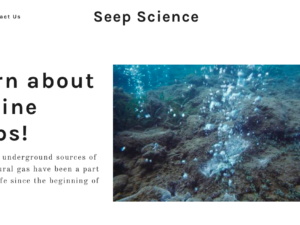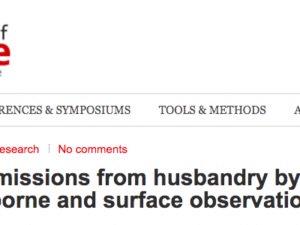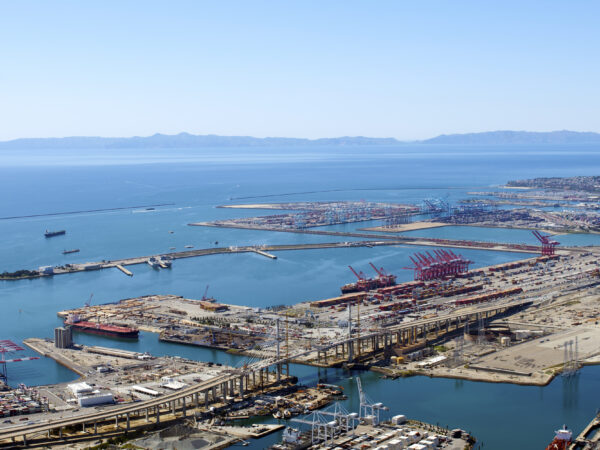
Aerial view of the Port of Long Beach.
The BRI team headed down to the Ports of Long Beach and Los Angeles (hereafter referred to as “The Ports”) April 9th to survey air quality while Mako, a thermal infrared hyperspectral sensor developed by The Aerospace Corporation surveys from above. Mako is flown on aircraft, while BRI mobile laboratory, Standard Instrumentation Suite: Truck Enabled for Response: SISTER™ analyzed air quality and collected samples at street level. SISTER measures 13 trace gases, meteorology, aerosol vertical profile, and aerosol size spectra at up to highway speed. Real-time visualization enables targeted air sample collection (60+ gases analyzed). Concurrent airborne hyperspectral remote sensing and ground in situ sampling by SISTER allowed for validation of data from both tools.
*The data from this survey is presented in a publication now in press.
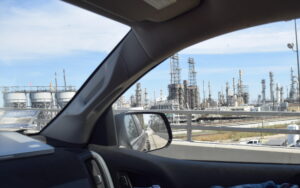
Phillips 66 refinery through TMOG’s window, east of the Port of Los Angeles.
BRI (an essential services company) visited The Ports and surrounding areas several times for air quality surveys during the initial California stay-at-home order in 2020. The stay-at-home order and subsequent slowing down of business, traffic, and activity at The Ports drastically reduced pollutant concentrations. For example, NOX was 300 ppb in the summer of 2019, but just 30 ppb in May 2020 (at the height of the COVID-19 shutdowns). BRI returned to The Ports in September 2020 when activity had largely returned to normal or even was elevated. BRI has thoroughly revamped SISTER this year, updating almost every aspect of the mobile laboratory. This survey is the first SISTER survey in 2021 in support of Mako by quantifying emissions and identifying sources.
The survey measured enhanced methane levels near the Torrance refinery within 10 minutes of the Mako overflight and multiply transected the plume, as well as surveying extensively around the Carson Refinery. Another goal was wind mapping leveraging bridges to allow profiling to 70 m to better understand the complex windflow patterns across The Ports. Analysis of these data will be used to design an improved air quality survey planned for a week or two.
© 2021 Bubbleology Research International. All rights reserved.
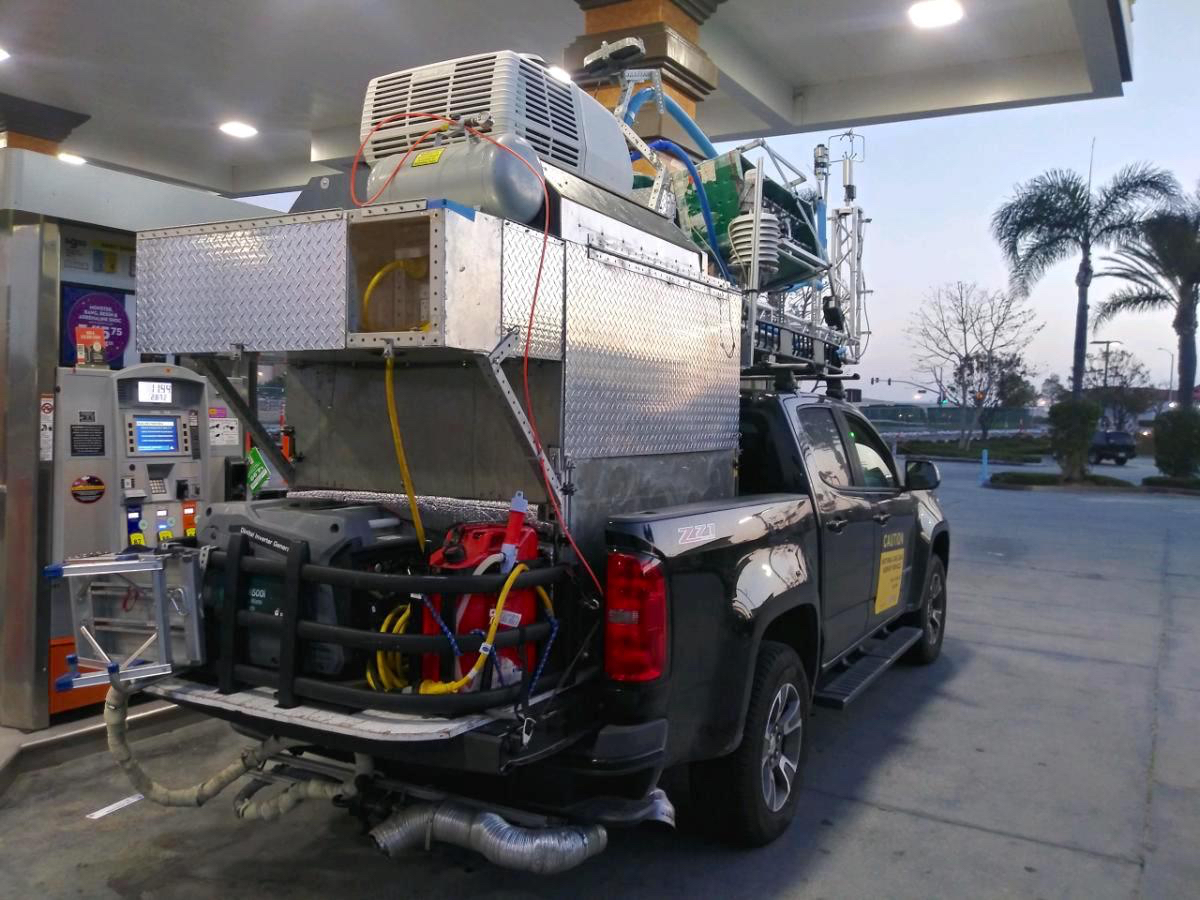
Updated version of SISTER (2021), BRI’s mobile air quality laboratory.
